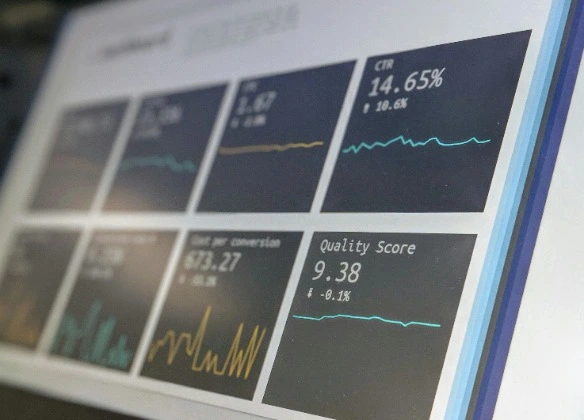

How Ransomware Impacts Law Firms In 2024: Risks and Protections for Legal Practices
In the evolving digital security landscape, ransomware continues to present a significant threat to law firms in 2024. Your practice likely handles sensitive client information, making it a prime target for cybercriminals. Attackers are becoming more sophisticated, employing tactics such as double extortion—where they not only encrypt your data but also threaten to release it publicly unless a ransom is paid. This evolution in ransomware strategy has necessitated a shift towards more robust and proactive cybersecurity measures within the legal sector.
As you navigate the complexities of protecting your firm, understanding the specific risks and the nature of ransomware attacks is pivotal. Cybercriminals exploit vulnerabilities in firms’ security systems and make ransomware more difficult to detect and counteract. They may even specifically target your firm because of the valuable and confidential nature of the data you possess. It’s essential to stay current with cybersecurity best practices to mitigate the chances of an attack and prepare for potential incidents. Knowledge and preparation could distinguish between minor inconveniences and catastrophic breaches of your client’s trust.
Understanding Ransomware
Ransomware is a form of malicious software that blocks access to a computer system or encrypts data until a ransom is paid. As a law firm, your data is critical; ransomware can hold this data hostage, severely disrupting operations. Even with backups, restoration can be time-consuming, prolonging the downtime and making ransom payment temptingly expedient.
Key Characteristics of Ransomware:
- Encryption: Ransomware encrypts files, making them inaccessible without a key.
- Demand for Ransomware: Hackers demand payment, often in cryptocurrency, for decryption.
- Pervasiveness: Ransomware can spread across networked devices, affecting multiple systems.
Ransomware attacks often exploit security vulnerabilities to gain access to systems. Once inside, they can deploy the payload, which encrypts files and displays ransom instructions. These attacks are lucrative for cybercriminals and can be disruptive and costly for law firms.
Protection Measures:
- Regular Backups: Ensure backups are frequent and tested for reliability.
- Security Training: Implement ongoing cybersecurity awareness training.
- Robust Security: Maintain up-to-date antivirus software and employ firewalls.
Consulting experts like Nick Nouri (compunet.ca), experienced in cybersecurity for law firms in Vancouver, can provide tailored advice for imposing robust defense mechanisms. Firms should stay informed about ransomware trends and consistently upgrade their security practices to combat these ever-evolving threats.
Prevalence of Ransomware in the Legal Sector
In 2024, you’re witnessing an increased prevalence of ransomware attacks targeting law firms. Recognizing the value of the confidential information held by these firms, cybercriminals view them as lucrative targets. Your sector’s vulnerability is exposed by several factors, including, but not limited to, the reluctance of some firms to adopt robust cybersecurity measures.
Data at Risk:
- The client’s sensitive information
- Internal communications
- Strategic litigation documents
Statistics:
- 43% of law firms reported using file encryption.
- Less than 40% of firms utilize email encryption and two-factor authentication.
When examining the defenses set up by law firms, it becomes apparent that a significant portion has yet to secure digital assets against such cybersecurity threats fully. The trend has not improved sufficiently over the years, especially regarding encryption and multi-factor authentication.
Attack Outcomes:
- Data Theft: Confidential data theft occurs before encryption by ransomware.
- Dual Extortion: It’s common to see two ransom demands—one for a decryption key and another to stop sharing your stolen data.
Given these factors, you must understand that the risk is ongoing and escalating. Law firms must enhance their cybersecurity measures to mitigate these risks as stewards of highly sensitive data. Your response to these threats will shape not only the integrity of your data but also the trust of your clients and your firm’s reputation.
Financial Implications
When you, as a law firm, face ransomware threats in 2024, your financial stability can be significantly compromised. Direct financial losses often arise from the demanded ransom payments themselves. However, your indirect costs from business interruption can eclipse these initial figures.
Direct Costs:
- Ransom payments: Firms may feel compelled to pay to regain access to sensitive data.
- Crisis management: Hiring specialist negotiation services and incident response teams.
Indirect Costs include:
- Loss of billable hours as operations stall.
- Long-term reputational damage potentially leads to the loss of clients.
- Regulatory fines for data breaches.
- Increased insurance premiums following a claim.
Here is a sample breakdown of potential costs:
| Cost Type | Likely Expense |
| Ransom Payment | Variable |
| IT Recovery | High |
| Legal Consequences | Moderate to High |
| Loss of Billable Hours | Significant |
| Insurance Premiums | Increased rates |
Glenn Kemp from Clear Concepts in Winnipeg (website) cautions, “Underestimating the financial burden of a ransomware attack can be a critical mistake for any law firm. Post-attack expenses often run much deeper than the initial ransom demand.”
Your proactive cybersecurity measures, robust backup systems, and comprehensive insurance coverage are vital to mitigate these financial impacts. Your preparation directly influences whether these costs are a temporary setback or a severe blow to your financial health.
Legal and Ethical Obligations
In the context of ransomware attacks against law firms, you must understand that stringent ethical and legal responsibilities bind your firm as a legal entity. One of the paramount considerations is the protection of attorney-client privileged information.
Your ethical obligations include:
- Maintaining Client Confidentiality: The American Bar Association Model Rule 1.6 mandates safeguarding your client’s information from unauthorized access.
- Competence: Rule 1.1 requires you to keep abreast of changes in the law and its practice, which includes the benefits and risks associated with technology.
Your legal obligations involve compliance with various state and federal laws regarding data breach notifications and safeguarding personal information. In the event of a cyberattack, timely reporting is crucial. For example, proposed ransomware legislation mandates a 24-hour reporting window for acknowledged ransomware payments.
To adhere to these obligations, you are required to implement:
- Incident Response Plans: These should be comprehensive, well-written, and regularly tested to ensure immediate action can be taken during a cyber incident.
- Regular Training: Keeping your staff informed about cybersecurity best practices minimizes risk exposure.
- Data Encryption and Backups: Utilize these tools to protect sensitive information and maintain business continuity.
Remember, failing to comply with these obligations can lead to legal liability, reputational damage, and loss of client trust. Therefore, you must stay vigilant and well-prepared to defend your firm against ransomware threats.
Risk Management Strategies
When addressing ransomware threats in 2024, your law firm must deploy robust risk management strategies. Here’s how to safeguard your operations:
Implement Strong Access Controls:
- Utilize Multi-Factor Authentication (MFA) to verify user identities.
- Limit user privileges based on roles to minimize access to sensitive data.
Regular Data Backup and Recovery Plans:
- Perform frequent backups and ensure they are stored securely, offline or on immutable storage.
- Conduct regular disaster recovery drills to test your restoration process.
Continual Employee Education:
- Provide ongoing training sessions to raise awareness about phishing and social engineering tactics.
- Emphasize the importance of reporting suspected security incidents immediately.
Update and Patch Management:
- Keep all systems and software up-to-date with the latest security patches.
- Automatically enforce updates to lessen the risk of exploitation through known vulnerabilities.
Proactive Monitoring and Incident Response:
- Utilize advanced threat detection systems to monitor for suspicious activity.
- Have an incident response plan clearly outlining steps to take during a breach.
By executing these strategies with diligence, your firm can significantly reduce the likelihood of being compromised by ransomware. Remember, proactive defense is key in the ever-evolving landscape of cybersecurity threats.
Technology and Security Innovations
In 2024, your law firm could be impacted significantly by ransomware. The stakes are high due to the sensitive nature of your stored data. You must understand that technology and security innovations are not just advisable but critical components of your firm’s defensive strategy.
Ransomware Innovations have forced a shift in your approach toward cybersecurity. No longer is it sufficient to rely on outdated defense mechanisms. You need to adopt a more proactive stance:
- Endpoint Detection and Response (EDR) systems are vital. They actively monitor and respond to threats on devices that access your network.
- Transitioning to Zero Trust Architecture ensures that only authenticated and authorized users and devices can access your network and applications.
Double Extortion Tactics warrant particular attention. Attackers encrypt your files and threaten to release your data publicly unless a ransom is paid. To counter this:
- Implement regular data backups and ensure they are stored securely, preferably with an air gap between the backups and your network.
- Employ advanced threat intelligence services to stay ahead of threat actor tactics and vulnerabilities within your systems.
Finally, embrace the concept of Continuous Security Training for your staff. Human error can undermine even the most sophisticated security infrastructure.
| Security Measures | Description |
| Encryption | Protect data both in transit and at rest. |
| Access Controls | Limit user access to necessary information and systems only. |
| Regular Updates | Keep all systems and software up to date with the latest security patches. |
Remember, the technology and security innovations you implement today will fortify your defenses against the ransomware threats of tomorrow.
Case Studies
Several law firms have fallen victim to sophisticated ransomware attacks in the past year. These incidents are not just theoretical scenarios — they represent real-world breaches with significant consequences.
Firm A
- Incident: Encryption of sensitive case files
- Impact: Hindered case progress and incurred financial losses
- Ransom Paid: $500,000
- Outcome: Even after payment, only partial data recovery
This case is a stark reminder of the importance of secure data backups and the risks of paying ransoms.
Firm B
- Incident: Data theft followed by encryption
- Attack Method: Phishing email
- Impact: Client confidentiality compromised
- Response: Refused to pay ransom; sought legal recourse
This instance highlights the need for robust training in recognizing phishing attempts and the value of a comprehensive incident response plan.
Firm C
- Incident: Disruption of legal operations for several days
- Preventative Measures: Advanced firewalls and employee cyber training
- Impact: Minimized due to proactive cybersecurity measures
- Recovery: Quick restoration from offline backups
Your vigilance and investment in cybersecurity can significantly mitigate the impact of such attacks on your operations and reputation. While these case studies reflect different responses to ransomware, each emphasizes the crucial role of preparedness and the high stakes of cybersecurity in the legal sector.
Future Outlook
As you navigate the digital landscape in 2024, your law firm must stay vigilant against ransomware. Cyber threats continue to evolve, with ransomware remaining a critical concern for law firms. Remember that new ransomware tactics include double extortion, which starts with the encryption of your files, followed by a threat to release them unless a ransom is paid.
Key points to consider for your firm’s ransomware defense strategy:
- Proactive Measures: Implement aggressive threat detection and cybersecurity audits to catch vulnerabilities.
- Employee Training: Regularly train your team on recognizing phishing attempts and proper security protocols.
- Disaster Recovery Plan: Establish comprehensive backup systems and recovery plans in the event of an attack.
Aaron Kane from CTI Technology (click here) remarks, “The key to managing ransomware is to stay one step ahead. Use the latest cybersecurity tools and strategies to protect your sensitive data.” This advice is particularly relevant as you rely more on technological solutions.
Statistics to Consider:
| Year | Ransomware Attacks on Law Firms | % Increase |
| 2023 | 120 | — |
| 2024 | Projected 150 | 25% |
These projected increases underscore your firm’s need to prioritize investments in advanced cybersecurity infrastructure and training to mitigate the risk of ransomware incidents. Staying informed and prepared is your best defense in this constantly changing cyber threat environment.

Technology
25 March 2025
Ransomware-As-A-Service Variants on the Rise With Critical Infrastructure Providers at the Greatest Risk

Business Advice
25 March 2025
Claims Processing Automation: How Insurers Can Cut Costs and Improve CX

Technology
18 March 2025
Secret Signs Your Internet Security Has Been Compromised






















